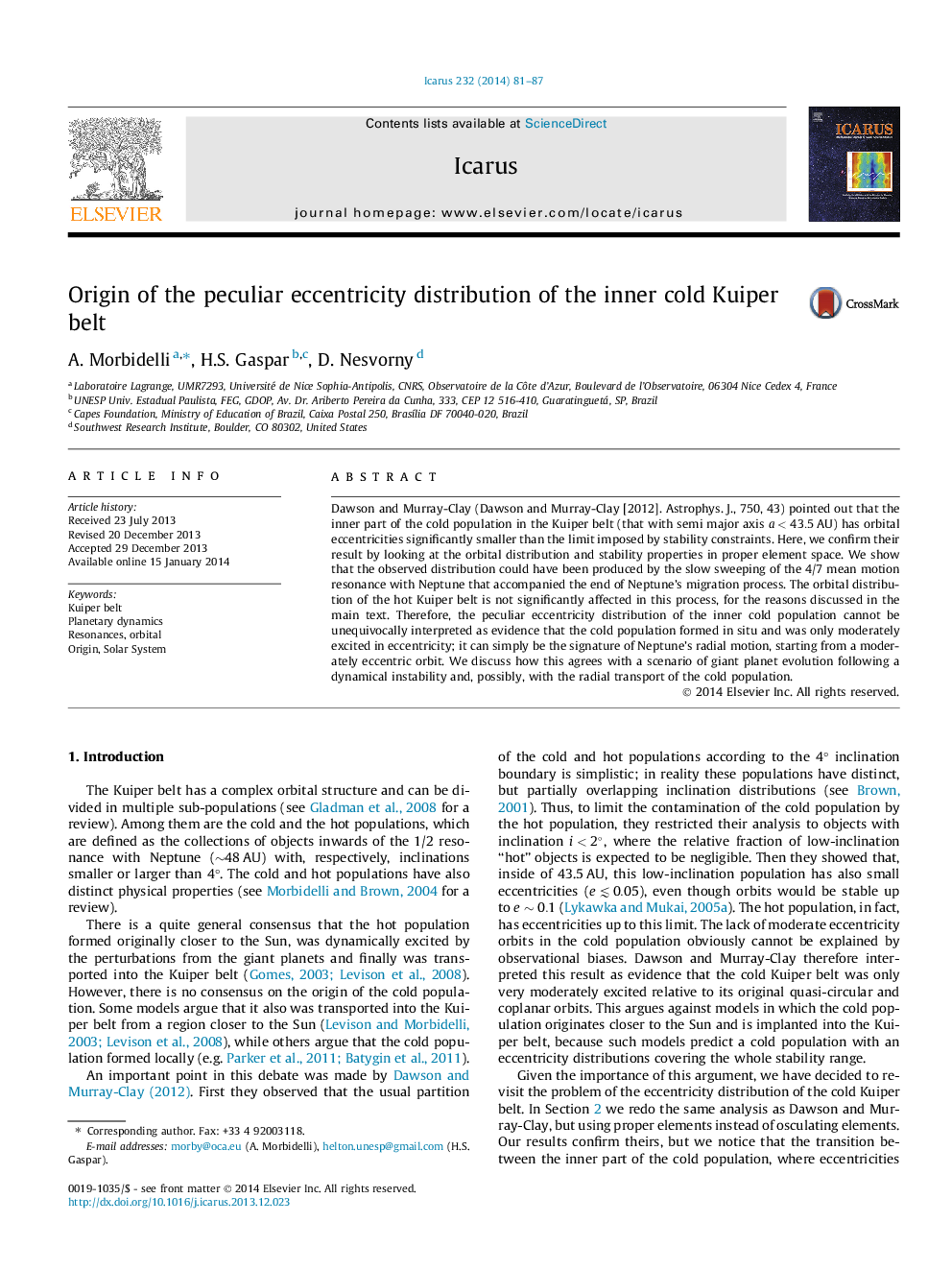| Article ID | Journal | Published Year | Pages | File Type |
|---|---|---|---|---|
| 8138472 | Icarus | 2014 | 7 Pages |
Abstract
Dawson and Murray-Clay (Dawson and Murray-Clay [2012]. Astrophys. J., 750, 43) pointed out that the inner part of the cold population in the Kuiper belt (that with semi major axis a<43.5AU) has orbital eccentricities significantly smaller than the limit imposed by stability constraints. Here, we confirm their result by looking at the orbital distribution and stability properties in proper element space. We show that the observed distribution could have been produced by the slow sweeping of the 4/7 mean motion resonance with Neptune that accompanied the end of Neptune's migration process. The orbital distribution of the hot Kuiper belt is not significantly affected in this process, for the reasons discussed in the main text. Therefore, the peculiar eccentricity distribution of the inner cold population cannot be unequivocally interpreted as evidence that the cold population formed in situ and was only moderately excited in eccentricity; it can simply be the signature of Neptune's radial motion, starting from a moderately eccentric orbit. We discuss how this agrees with a scenario of giant planet evolution following a dynamical instability and, possibly, with the radial transport of the cold population.
Related Topics
Physical Sciences and Engineering
Earth and Planetary Sciences
Space and Planetary Science
Authors
A. Morbidelli, H.S. Gaspar, D. Nesvorny,
